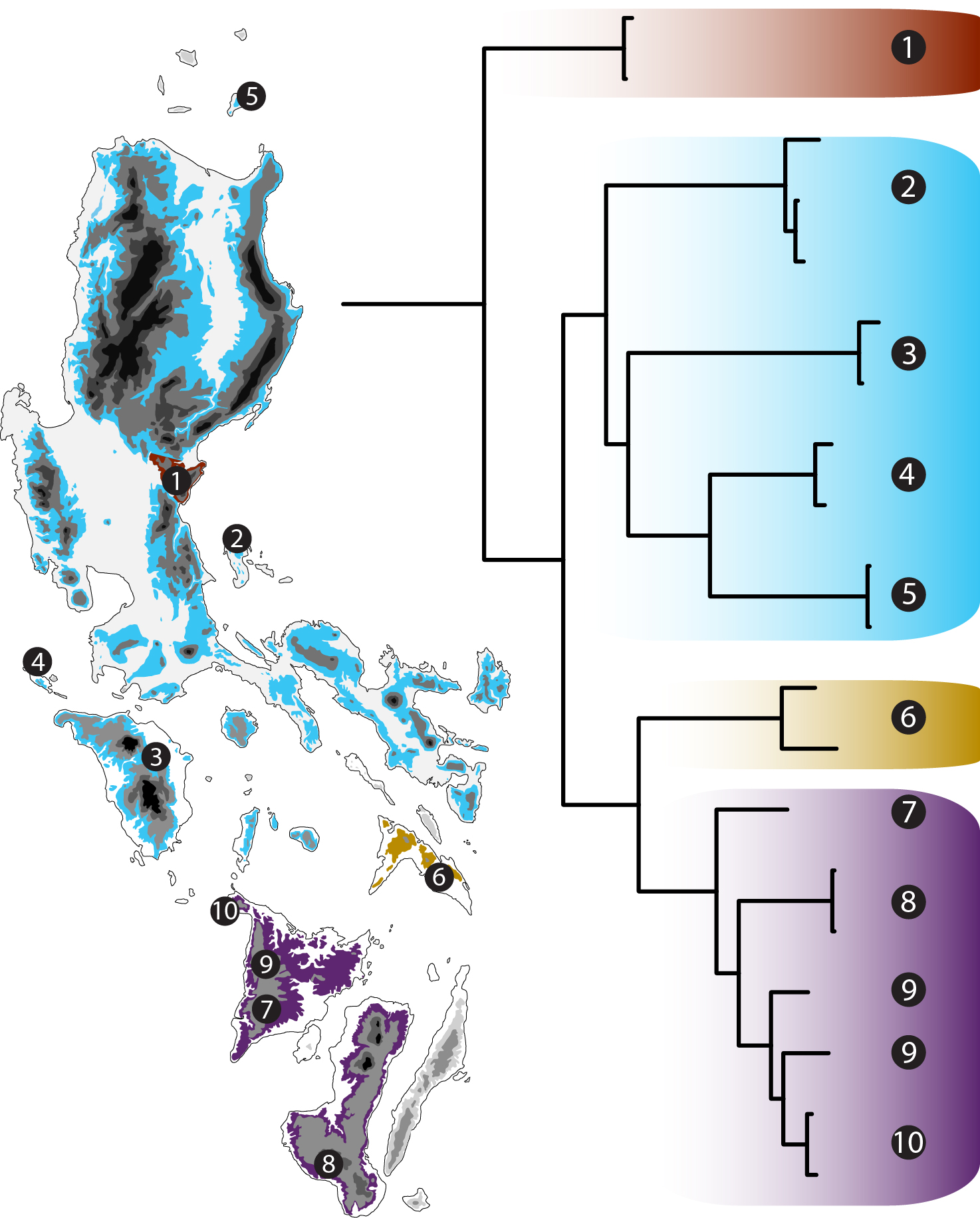New Species Descriptions in Small Burrowing Skinks

The Philippines is home to a remarkable number of species of amphibians and reptiles. This amazing diversity is often due to the complex geological history of this archipelago with islands cyclically being isolated and then reconnected, as sea levels would fluctuate. One group of reptiles with a remarkable amount of morphological and genetic diversity is the Philippine Slender Skinks of the genus Brachymeles. These lizards often inhabit leaf litter and soil substrates, and many exhibit some form of limb- or digit-reduction.
Previous work with skinks in the genus Brachymeles has revealed a remarkable level of unknown diversity, leading to the descriptions of many new species. Historically, many species were recognized to occur throughout multiple islands and distinct faunal regions. However, as sampling has increased, and comprehensive morphological and molecular examinations have occurred, these once wide ranging species are now recognized as complexes of multiple unique lineages.
In this paper we examined characters measured or counted on external body surfaces, and analyzed molecular variation, for a subset of the Brachymeles bonitae Species Complex (B. bonitae and B. tridactylus). Our analyses revealed new, undescribed diversity within this complex, and we describe two new species as well as redescribe B. tridactylus. We designate populations of B. bonitae from Aurora Province on Luzon Island as B. isangdaliri, and populations of B. bonitae from Masbate Island as B. mapalanggaon. What makes B. isangaliri special is that it represents the first unidactyl species of Brachymeles, meaning this species has only a single small digit on its hands and feet. If that wasn’t enough, B. mapalanggaon is the first known limbed, but digitless species within this genus. Such a neat complex of small, burrowing lizards!
Citation:
Davis, D.R., K.D. Feller, R.M. Brown, and C.D. Siler. 2014. Evaluating the diversity of Philippine Slender Skinks of the Brachymeles bonitae Complex (Reptilia: Squamata: Scincidae): Redescription of B. tridactylus and descriptions of two new species. Journal of Herpetology 48:480-494. pdf
